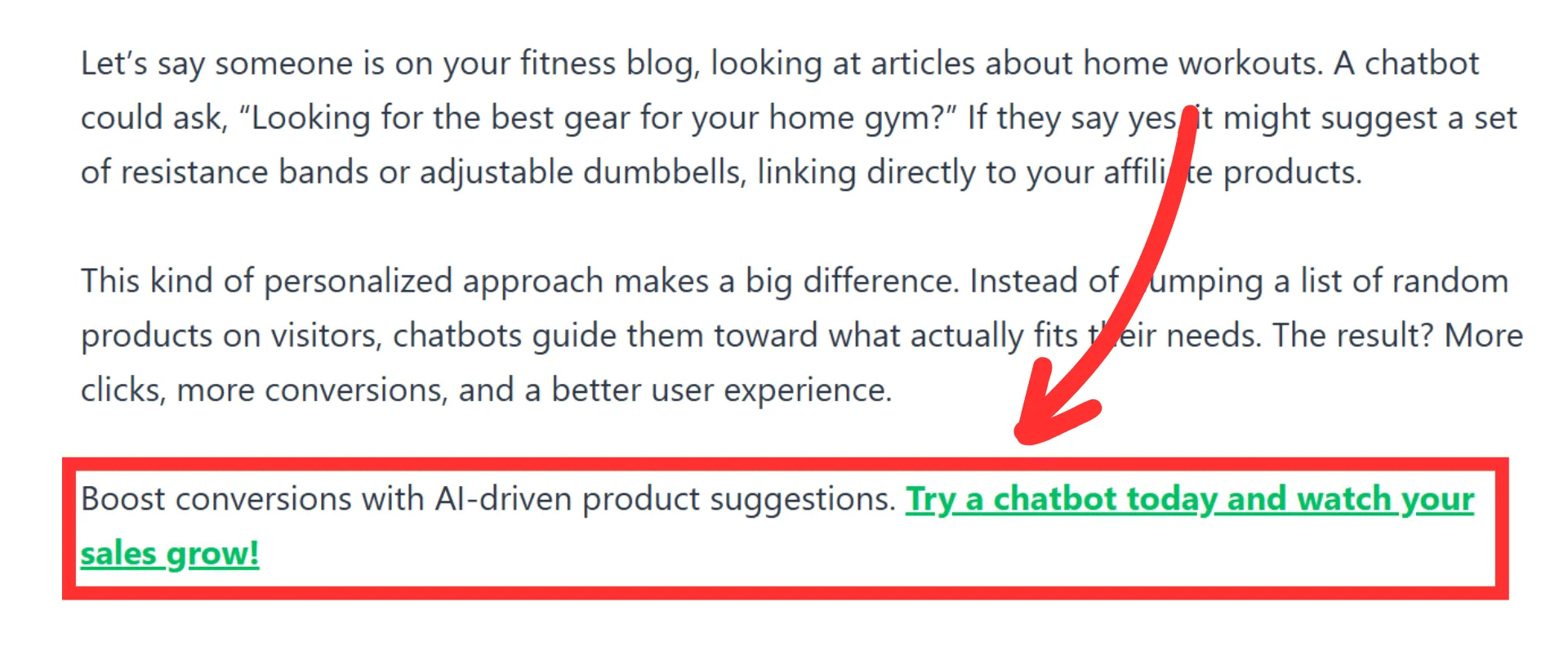Why Your Affiliate Links Aren’t Converting + 6 Proven Ways to Promote Them Right
Struggling to earn from affiliate marketing? You’re not alone. Clicking publish isn’t enough. There’s a reason why your affiliate links aren’t converting. Here are also ways to fix it and promote them the right way.

I still remember the first time one of my blog posts took off. Traffic spiked like crazy. I had optimized everything: keywords were solid, content was sharp, and the topic was spot-on. I thought, “This is it. I’m finally going to start making consistent commissions.”
But days passed. Then weeks.
Hundreds of clicks on my affiliate links… and not one sale.
I thought maybe something was broken. I checked my links. Everything tracked fine. The products were legit. I even tried switching them out. Still nothing.
That’s when it ran through my head. Getting traffic isn’t the problem. Getting people to click and buy is the main part nobody really explains.
And it’s not just me. A lot of affiliate marketers hit the same wall. They get the traffic, but the money doesn’t follow.
Most of the time, it comes down to a few things: weak product fit, poor placement, lack of trust, or pushing too hard. Sometimes the offer just doesn’t make sense for the person reading.
In this article, I’ll break down exactly why your affiliate links aren’t converting. Then I’ll walk you through six simple but effective ways to promote them the right way without sounding like a pushy salesman.
Let’s fix it.
Key Takeaways
- Affiliate links don’t convert when there’s no trust, value, or real help. If it feels like a sales pitch, users bounce.
- Targeted content makes the biggest difference in promoting affiliate links. Help solve a problem first, then introduce the link.
- Email, SEO blogs, and video content are reliable channels for promotion. They warm up the audience before the click.
- Avoid spamming, poor placement, and promoting too many links at once. It kills conversions and ruins credibility.
- Track what’s working: clicks, traffic sources, and user behavior. Guessing won’t grow your income.
- To promote affiliate links correctly, focus on relevance, timing, and clarity. Don’t just drop links; give a reason to click.
Why Your Affiliate Links Aren’t Converting
You’ve done the hard part. You wrote the content. You added the affiliate links. But the clicks are low. Worse, the sales are almost nothing. The issue isn’t the product. It’s how you present it.
Let me break it down.
1. Poor targeting: If you promote the right product to the wrong audience, nothing will happen. Let’s say you write a post on free tools for new bloggers, then drop a $200 premium SEO tool in the middle. That audience came for free tips. They’re not ready to spend. When your offer doesn’t match their intent, they won’t click. They’ll scroll past or bounce completely.
2. Lack of trust: If your whole article feels like one long sales message, you lose people. People don’t buy from strangers. They buy from people they trust. You need to show value before selling anything. Offer real advice. Share personal experience. Recommend the product only after you’ve helped them understand the problem and possible solutions.
3. Weak content: A few short lines and a product link won’t convince anyone. People want useful content. They want examples, pros and cons, and honest thoughts. For example, if you recommend a content writing tool, show how it helped improve your writing or saved you time. Add screenshots or a simple walkthrough. This makes the recommendation feel real, not forced.
4. Too many links: If you add a link every two lines, it makes your page look cluttered. Readers feel overwhelmed. It looks like you’re only trying to earn money, not help. It’s better to place one or two well-timed links after giving useful information. Guide readers to the next step, don’t dump options on them all at once.
5: No clear call to action: If you don’t tell people what to do, they’ll do nothing. After reading, they need a simple next step. Say it clearly. For example, “Try this tool free for 14 days” or “See the full pricing here.” Avoid vague phrases like “Check it out.” Be direct. Make it easy for them to take action right away.
How to Promote Affiliate Links the Right Way (6 Proven Methods)
Slapping a link into random content won’t cut it. If you want clicks and conversions, you need a smarter approach. These six methods work when done right.
1. Create Helpful, SEO Focused Blog Posts
The best affiliate content solves a real problem. If you are not just recommending a product, then you are answering a need. For example, if someone searches “best tools for email marketing,” they want a comparison, not a vague mention.
Review and comparison posts work well because they attract buyers. Focus on ranking for keywords people search before making a purchase. Insert your affiliate links naturally inside content that helps, not sells. Give readers enough value so they feel ready to take the next step. That step is clicking your link.
Recommended Reading: Why Valuable Content Wins in Affiliate Marketing (And How to Create It)
2. Build a Targeted Email List
Email is personal. It gives you a direct line to people who already trust you. But don’t just collect emails for the sake of it. You need the right audience. Offer something useful up front, like a short guide, checklist, or free course.
For example, I offer a free affiliate marketing course as a lead magnet. Check out the screenshot below.

That’s your lead magnet. Once they’re in, send emails that actually help. Share tips, stories, and solutions they care about. Then, drop your affiliate link where it fits. For example, if your email teaches a content strategy, recommend a tool you actually use in the process. Keep it real and useful; never a cold pitch.
Recommended Reading: How to Build a Strong Email List for Your Affiliate Marketing Business
3. Use YouTube or Short Form Video Content
Video grabs attention fast. People love seeing a product in action before they buy. That’s where you come in. Create short videos that focus on one thing—how the product helps.
It could be a tutorial, a quick comparison, or a real use case. For example, record yourself using an AI writing tool to outline a blog post. Show how it saves time. Mention the tool naturally while walking through the steps.
You don’t need to be flashy. Just be clear and honest. At the end, direct people to the link in your description or the top comment. Say something like, “If you want to try the same tool, the link’s below.”
Viewers who see the value will click. And they’re more likely to buy because they watched you use it first. Keep your content tight, focused, and real. One good demo can work better than a whole blog post.
Perfect. Here’s the fourth method with a clear explanation and solid context:
4. Promote Affiliate Links on High-Intent Pages
Not every visitor is just browsing. Some are ready to act (purchase), and those are the ones you target with high-intent content. These pages attract people who are close to making a decision. These are resource pages, tool pages, and step-by-step tutorials.
For example, a page titled “Best Tools to Start a Blog” is golden. The reader is already looking for tools. You just guide them to the right ones and place your affiliate links beside honest insights.
Or write a tutorial like “How to Set Up Email Automation,” and recommend the tool you actually use right inside the walkthrough.
These readers don’t need a sales pitch. They need help making a final choice. Your content should make that decision easy. Keep the page focused, clean, and helpful. When you hit the intent right, the clicks come naturally.
Here’s the fifth method, written with your tone and structure in mind:
5. Add Affiliate Links to Answer-Based Content (Quora, Reddit, Forums)
People go to places like Quora and Reddit to ask questions and look for answers that solve specific problems. That’s your chance to help. But if you drop a link right away, you’ll get flagged, ignored, or even banned from the subreddit group.
Lead with value. Share your real experience. Give a clear, useful answer first.
Let’s say someone on Reddit asks, “What’s the best free SEO tool for beginners?” Instead of spamming a link, break down what worked for you.
Explain how you used Ubersuggest to find low-competition keywords. Then say, “I started with this free tool, and here’s the link if you want to check it out.” That feels natural.
Only share links when they fit the conversation. People can tell when you’re just there to push a product. But if your answer actually helps, they’re more likely to trust your link and click. This kind of content keeps working long after you post it.
Here’s the sixth and final method, delivered with clarity and depth:
6. Use Content Upgrades and In-Content CTAs
A content upgrade is a bonus that adds more value to what the reader is already viewing. It could be a checklist, a quick-start guide, or a template that builds on your post.
For example, if your blog is about building a sales funnel, offer a downloadable PDF with funnel templates.
Inside that bonus, you can place your affiliate links naturally. Recommend the tools you used to build your own funnel. People who download are already interested, so the intent is high. You’ve earned their attention because they’re more open to clicking.
Also, don’t wait till the end of your content to tell them what to do. Use in content calls to action. After a key point, add a simple line like, “Want the tool I used here? It’s linked in this free guide.” This approach keeps the flow natural and gets more clicks.

Common Mistakes to Avoid When You Promote Affiliate Links
Promoting affiliate links can be profitable, but doing it wrong can hurt your reputation and sales. Here are the mistakes to watch out for:
1. Cloaking links the wrong way: Link cloaking is often seen as a shady tactic when done improperly. Some marketers try to hide affiliate links with URL shorteners or custom redirects to make them look cleaner.
The issue is that search engines and your audience can catch on. When they do, it can hurt your credibility and rankings. Always use proper link cloaking tools, and ensure they comply with guidelines.
2. Not disclosing affiliate relationships: Transparency is key. If you don’t disclose that your links are affiliate links, you risk losing the trust of your audience, and it’s required by law.
Always add a clear disclosure at the beginning of your post or near the affiliate link, such as, “This is an affiliate link. If you make a purchase, I may earn a commission at no extra cost to you.” Keeping it transparent builds trust and loyalty.
Recommended Reading: How to Disclose Affiliate Links Transparently and Build Loyal Audiences
3. Promoting too many products at once: It’s tempting to throw affiliate links into every post, but that can overwhelm readers. If you push too many products at once, it dilutes the effectiveness of each.
Focus on promoting products that genuinely help your audience. Highlight a few that are highly relevant to the topic, rather than overloading them with options.
4. Ignoring mobile formatting: A lot of your readers will be on mobile devices, so make sure your affiliate links are easy to click. If your site isn’t mobile-friendly, links can be hard to access or look messy.
Ensure that your website is responsive and that your affiliate links stand out without disrupting the mobile experience.
5. Not tracking clicks and performance: If you’re not tracking your affiliate link performance, you have no way of knowing what’s working and what’s not. Use tools like Google Analytics, affiliate dashboards, or specialized tracking software to monitor which links get the most clicks.
Adjust your strategy based on real data, not guesswork. If you know what’s performing, you can optimize your efforts for better results.
Recommended Reading: Top 14 Free Link Tracking and Management Tools for Affiliate Marketers
Conclusion
To succeed with affiliate marketing, focus on creating value-first content. It’s not about pushing sales but helping your audience solve real problems. When you align your promotion with their needs, conversions follow.
Remember, smart promotion leads to more sales. Don’t just throw affiliate links around. Use targeted methods that build trust, provide value, and solve problems.
Take action now: Focus on high-quality content that meets your audience’s needs. Track your performance, adjust your approach, and keep improving.
Want to dive deeper into affiliate marketing? Check out my 7-day free email course and start applying these strategies today.
Frequently Asked Questions
Why aren’t my affiliate links converting?
Affiliate links may not convert due to poor targeting, lack of trust, weak content, or overwhelming your audience with too many links. If the audience isn’t a good fit for the product or your content doesn’t provide value, they are less likely to click or purchase. Ensure you target the right audience, offer genuine value, and create content that builds trust. Also, keep your calls to action clear and easy to follow.
How do I improve my affiliate link conversion rate?
To improve your conversion rate, focus on value-first content, build trust, and include relevant affiliate links within your posts. Create helpful, SEO-focused content like reviews, comparisons, and tutorials. Promote products that align with your audience’s needs, and track your performance regularly to see what works. Use targeted email lists, video content, and high-intent pages to drive more qualified traffic.
What are the best ways to promote affiliate links?
The best ways to promote affiliate links include creating helpful, SEO-focused blog posts, building a targeted email list, using YouTube or short-form videos, and promoting links on high-intent pages. You can also add affiliate links to answer-based content on platforms like Quora, Reddit, and forums. Using content upgrades and in-content calls to action (CTAs) can also improve your results. These methods ensure your affiliate promotions are helpful and relevant to your audience.
How can I build trust with my audience for affiliate marketing?
Building trust starts with offering genuine recommendations, being transparent about affiliate relationships, and providing content that solves real problems. Avoid sounding too salesy and focus on the value the product offers. Share personal experiences, write in-depth reviews, and always disclose affiliate links to maintain trust. The more transparent and helpful you are, the more your audience will feel confident in clicking your affiliate links.
What are high-intent pages for affiliate marketing?
High-intent pages are content that targets users ready to make a purchase or take action. These include resource pages, tutorials, comparison pages, and product reviews. When people are searching for specific solutions or products, they’re more likely to convert. If your affiliate link is placed naturally on these types of pages, the chances of conversions increase significantly. Tailor your content to help visitors make their final buying decision.
Why should I track my affiliate link performance?
Tracking your affiliate link performance helps you understand which products and strategies are working. By using tools like Google Analytics, affiliate dashboards, and tracking software, you can monitor clicks, conversions, and sales. With this data, you can adjust your approach, optimize high-performing links, and drop those that aren’t working. Tracking ensures you’re making data-driven decisions to improve your affiliate marketing efforts and boost conversions.






